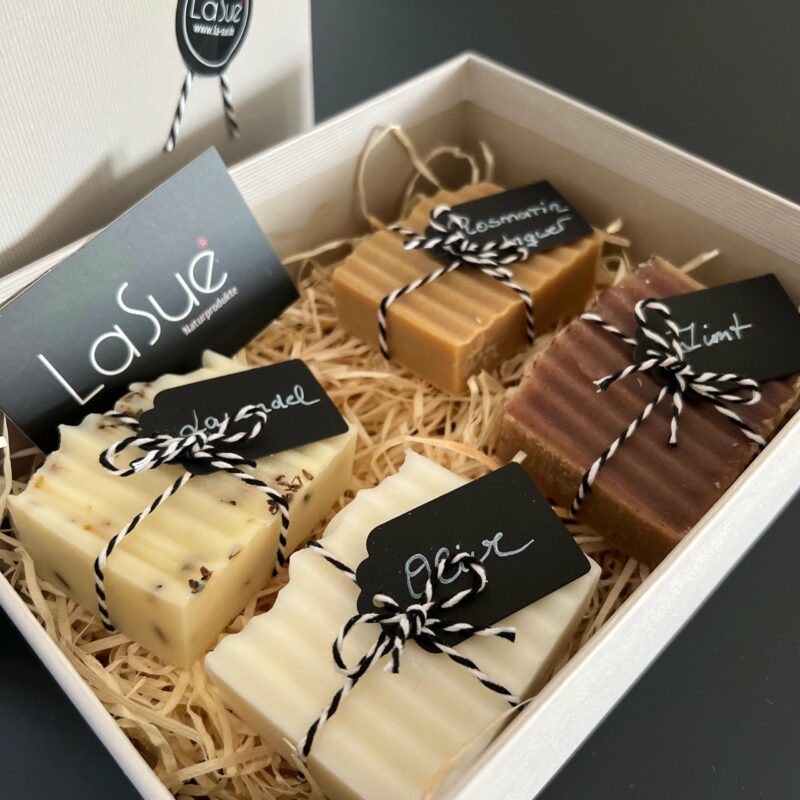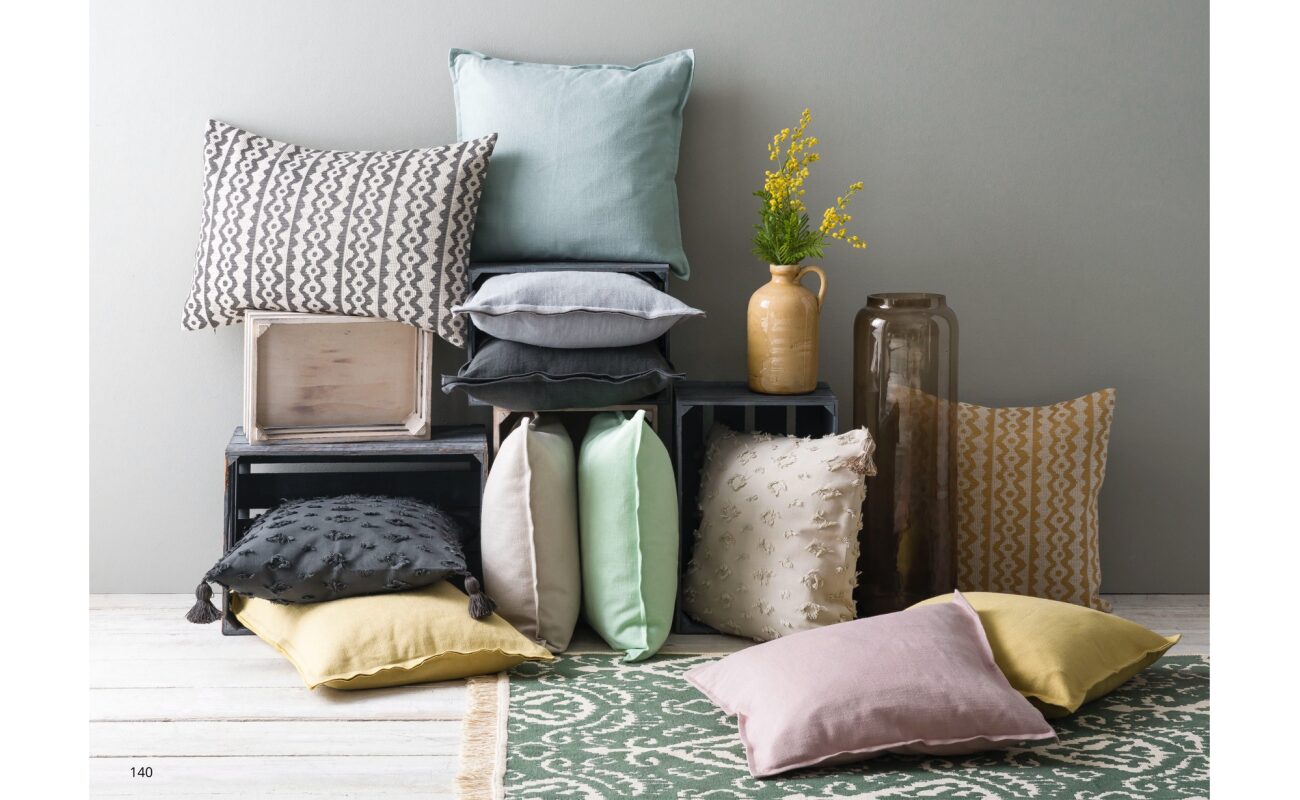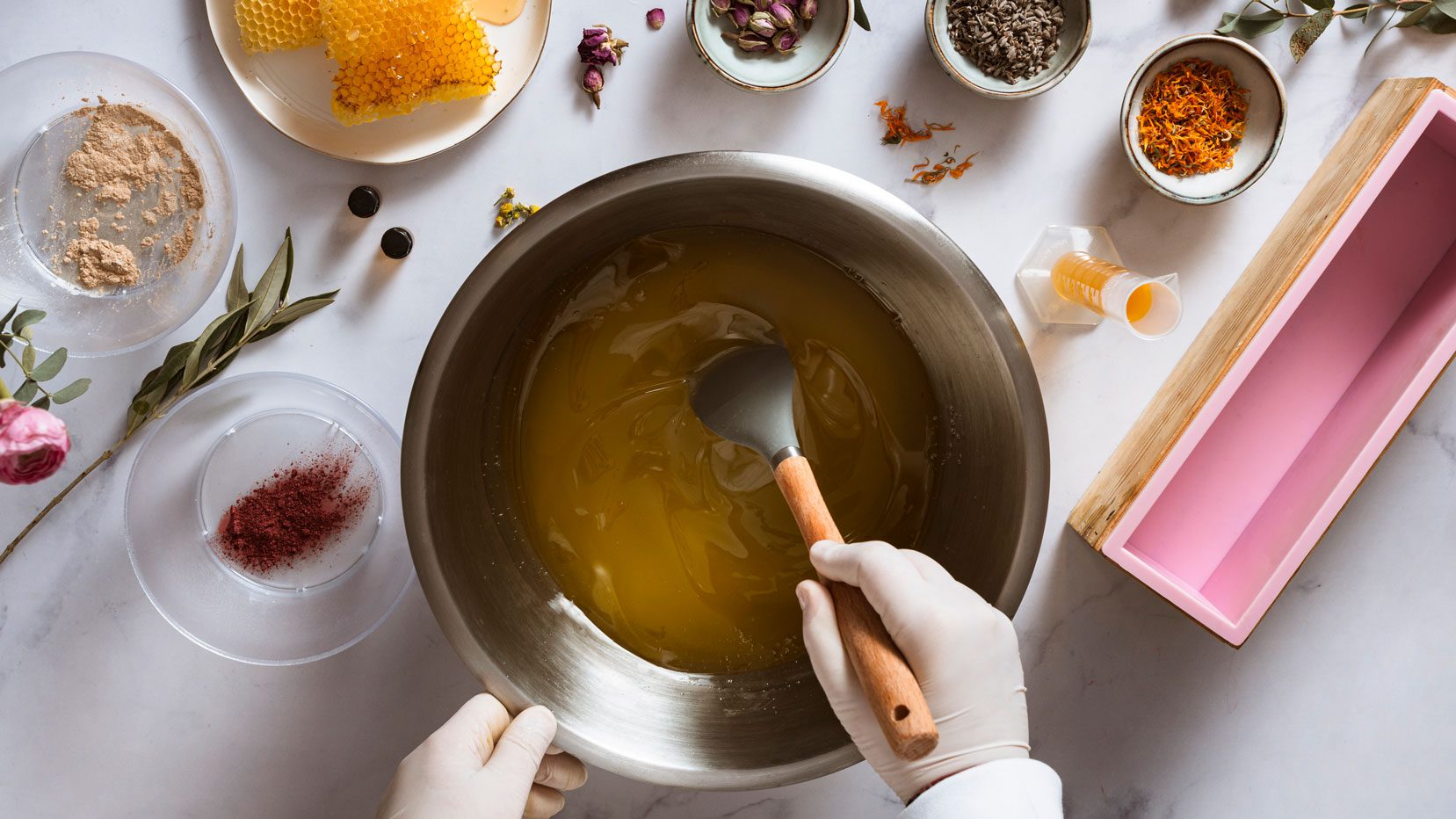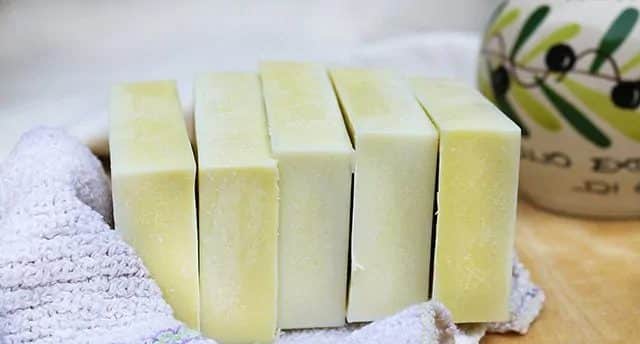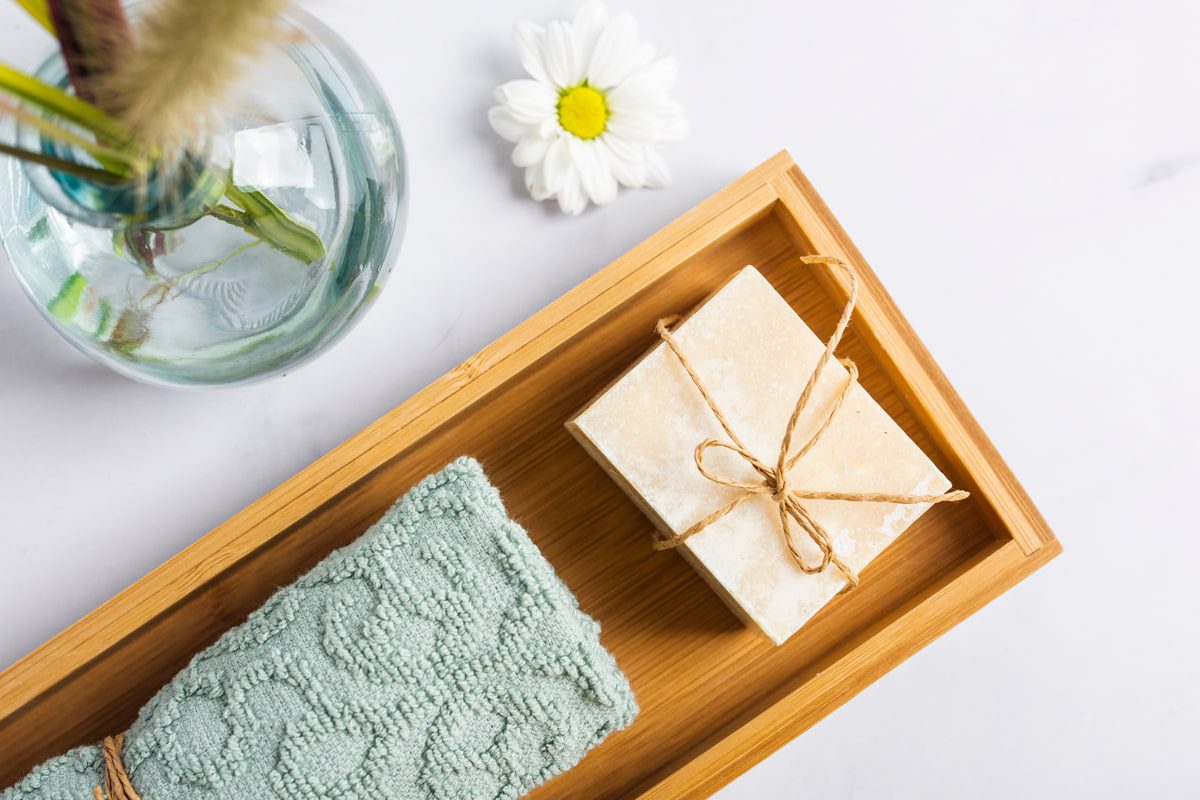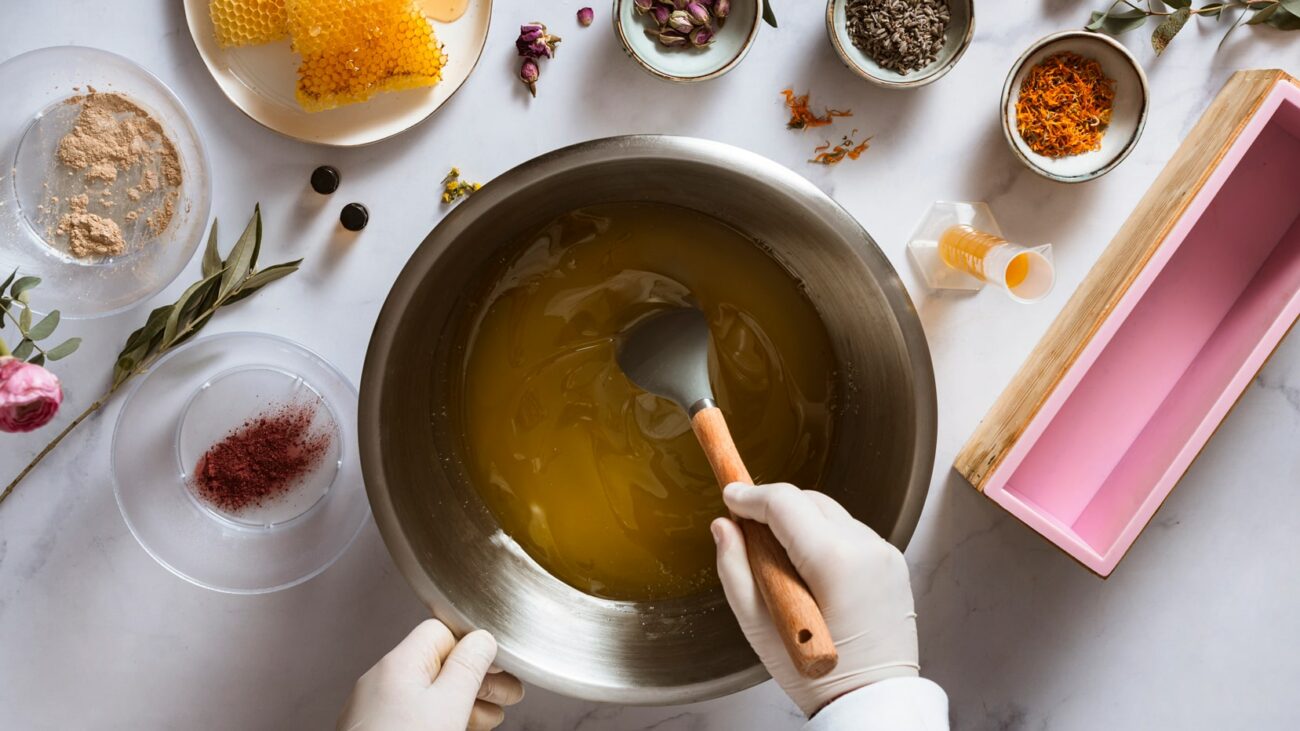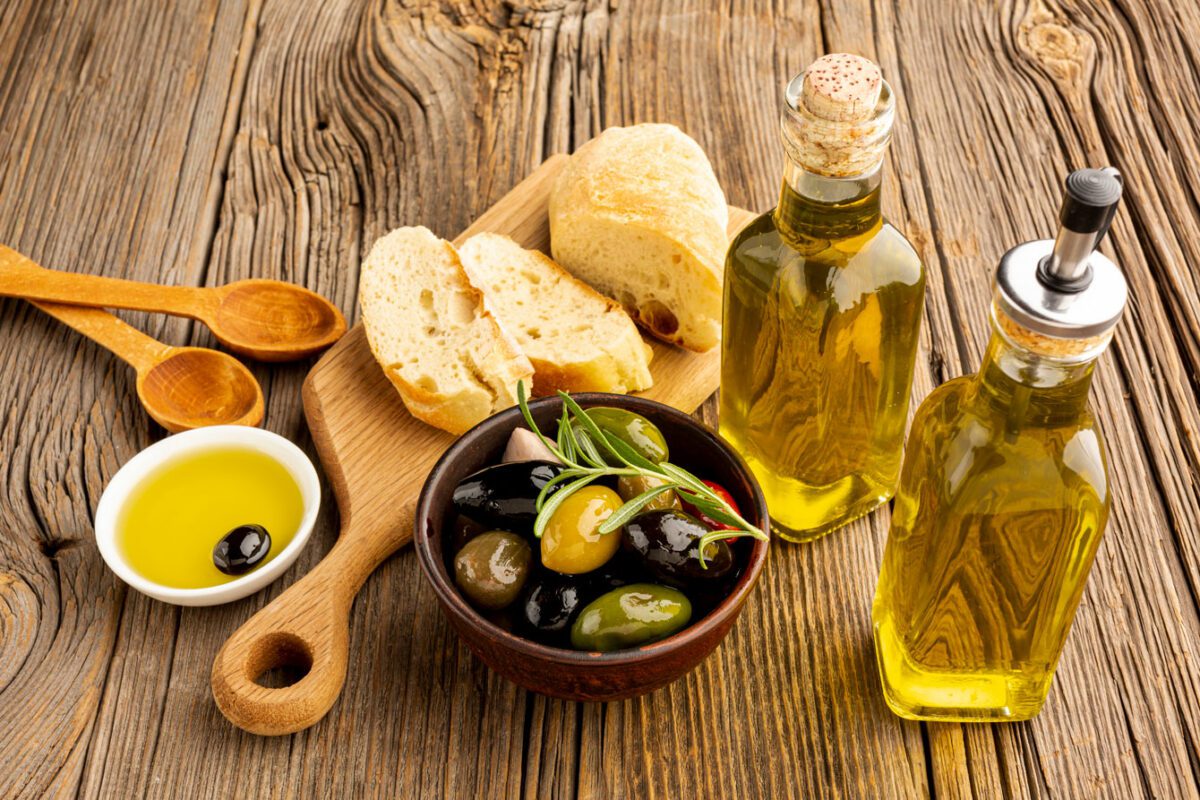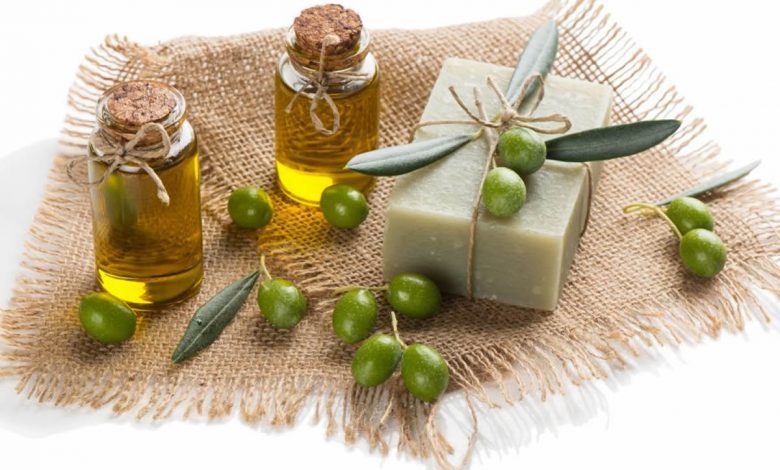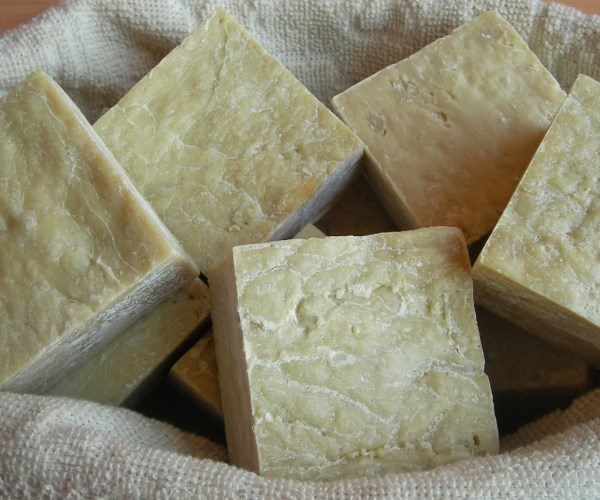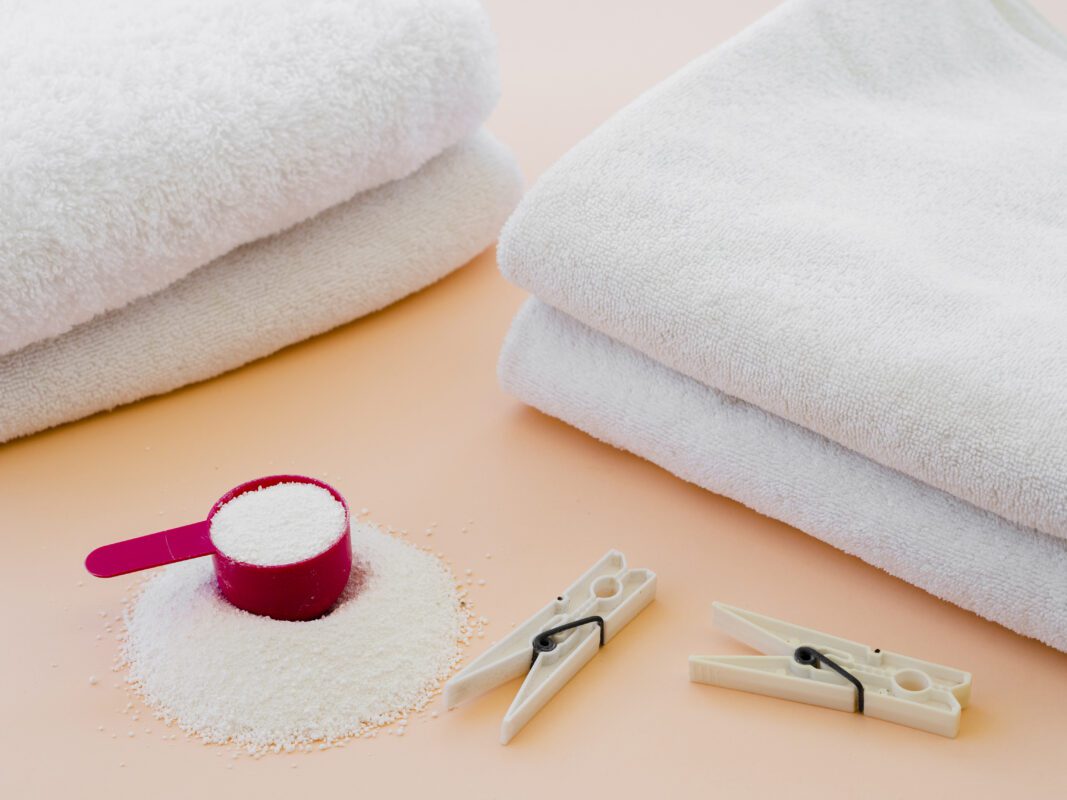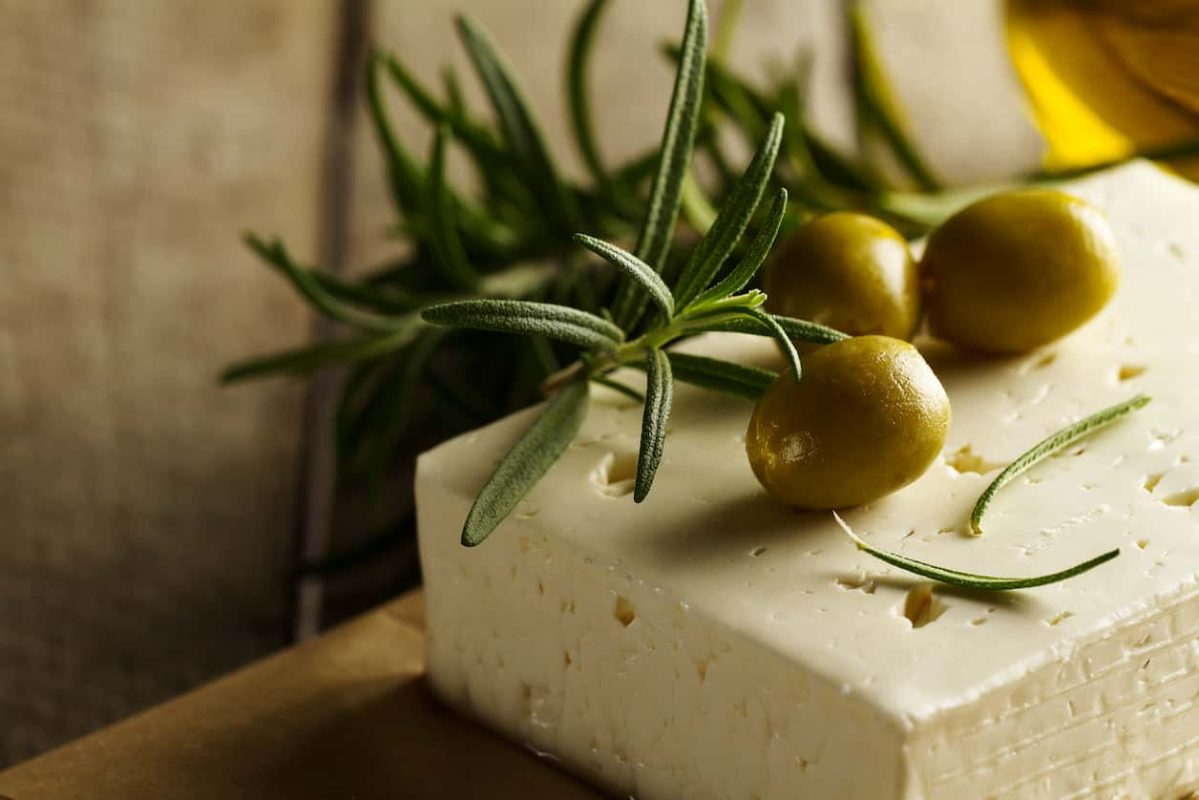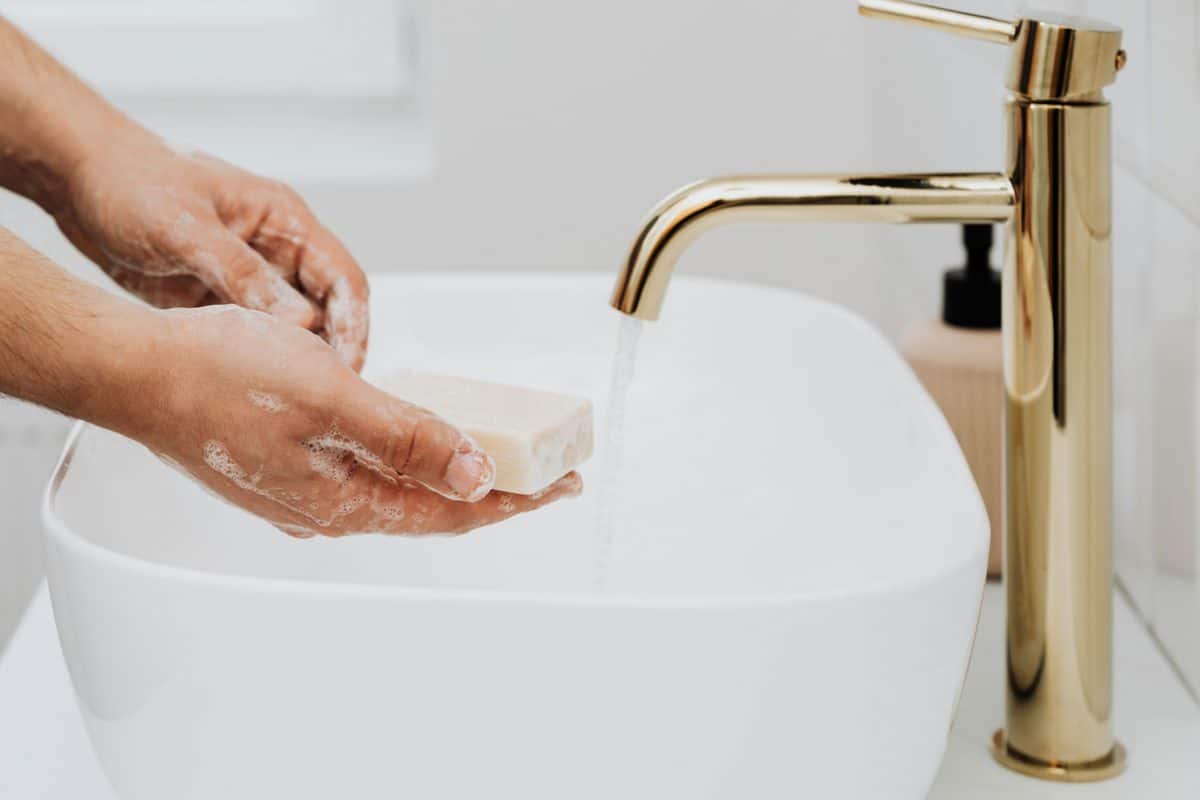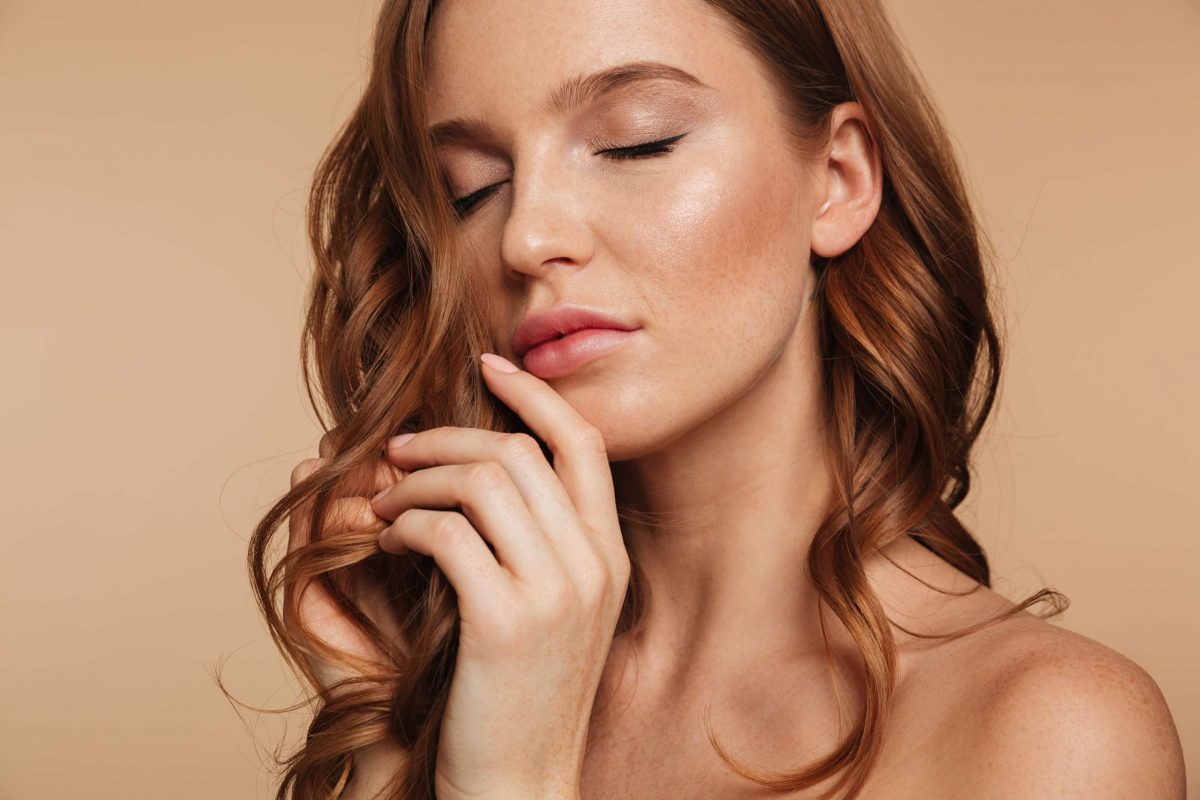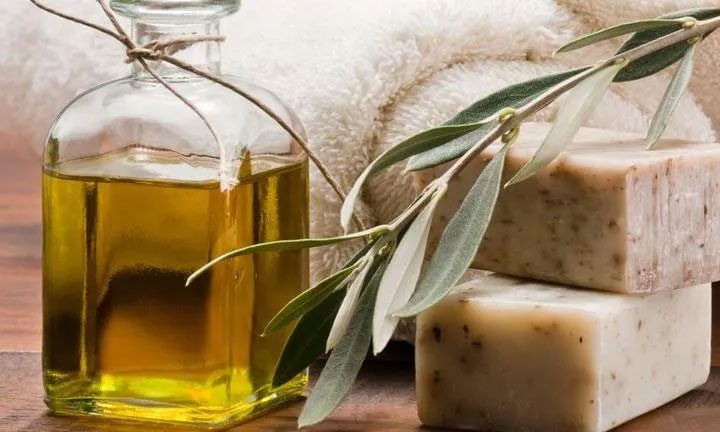Castile can be made with just a few simple ingredients and leaves skin soft, cleansed and hydrated. We will also add color to create a decorative swirl soap with instructions.
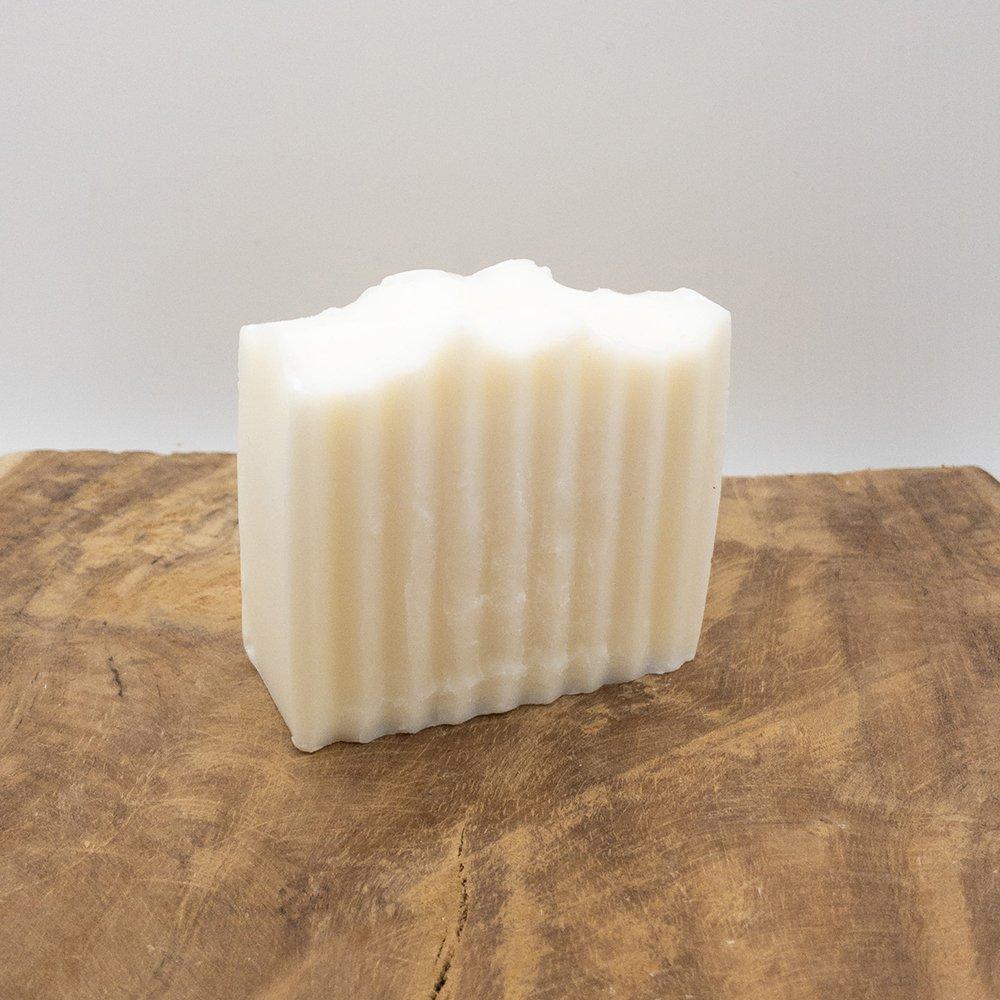
Soap making is so satisfying and almost addictive I warned you! I've been making homemade soap for a number of years and I'm still excited to try new recipes.
I started out making melt and pour soap bars and as my confidence grew I became more and more adventurous ending up making soap from scratch.
I've always wanted to try coloring my soap and make those pretty swirly soaps you see on Pinterest, but I wasn't sure how. So I finally decided to give it a try and it wasn't as hard as I thought it would be - like most things in life!
Production of olive oil soap
To make a multi-colored soap bar with swirls, you need a soap with a slight trace. Spur is a term used in soap making to mean that the soap has thickened and combined with the lye, water and oil to form an emulsion; the lye and the oils can no longer be separated.
Olive oil is the ideal fat for making a light trail because of its consistency. Light traces are basically the same consistency as cake batter. When you make soap with olive oil you get a nice bar of soap that is very good for the skin.
Normally, when making soap, the fat has to be melted first. Not so with olive oil as it is already liquid. However, it takes longer for it to catch on. So if you've made cold-process soap before, be patient, it will catch on.
Benefits of Olive Oil Soap
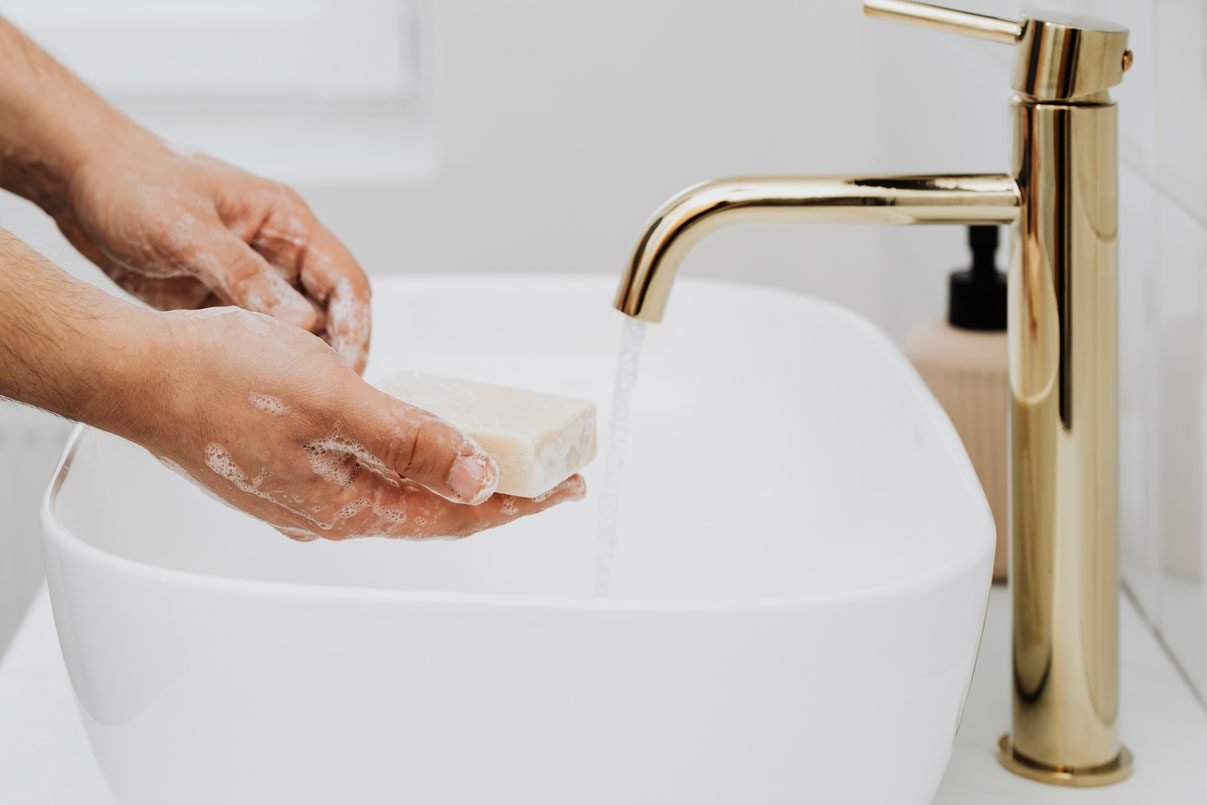
Olive oil has been used in beauty care for centuries and is often referred to as a superfood for the skin. It can protect skin by creating a protective barrier, promoting healthy skin and helping dry, damaged skin.
Making soap with olive oil is often referred to as castor soap. It creates an incredibly soft foam and not only cleanses the skin, but also makes it supple and provides it with moisture and nutrients.
Olive oil is one of the best ingredients to gently remove makeup, dirt, and grime. Additionally, olive oil can help with skin irritation and blemishes due to its antioxidant and anti-inflammatory properties.
best olive oil for soap making
When I add olive oil to a skincare recipe, my readers often ask me if they can use the same olive oil they use in the kitchen for cooking. The answer is yes!
However, one must be aware that not all olive oil is the same. Whether you're using olive oil for spaghetti or for making soap, there are a few things you should know.
Extra virgin olive oil means that it is the oil from the first pressing of the olives. It means no heat or chemicals were used to extract the oil from the olives. This is the olive oil I prefer to use when making soap for the best results for my skin.
Pure olive oil contains only about 10% virgin olive oil. Light olive oil is the lowest grade you can buy and doesn't mean that it's low in calories or fat, but rather that it has a light olive flavor.
Soap making with lye
As with all soap recipes, making this bar of soap requires lye and water. Lye is the ingredient that puts most people off soap making.
But every soap needs lye; even when melted and poured, soap contains lye. Mixing the lye water with the oil makes the soap soap. Melt and pour soap bases have already done this step for you.
If you follow a few safety guidelines, you can use the lye without harm.
Safety guidelines for the manufacture of lye soap
Always wear safety goggles and long gloves. This ensures that the lye does not get in your eyes or on your skin.
When mixing lye and water, use heat-resistant vessels as the chemical reaction will cause rapid heating.
Mix the lye in a well-ventilated area or outdoors.
Do not work with lye when children or pets are around.
Store the suds in a childproof container that is out of reach.
Dishes used for soap making must be properly sterilized before being used for cooking. If possible, use separate dishes for soap making.
Olive oil soap recipe
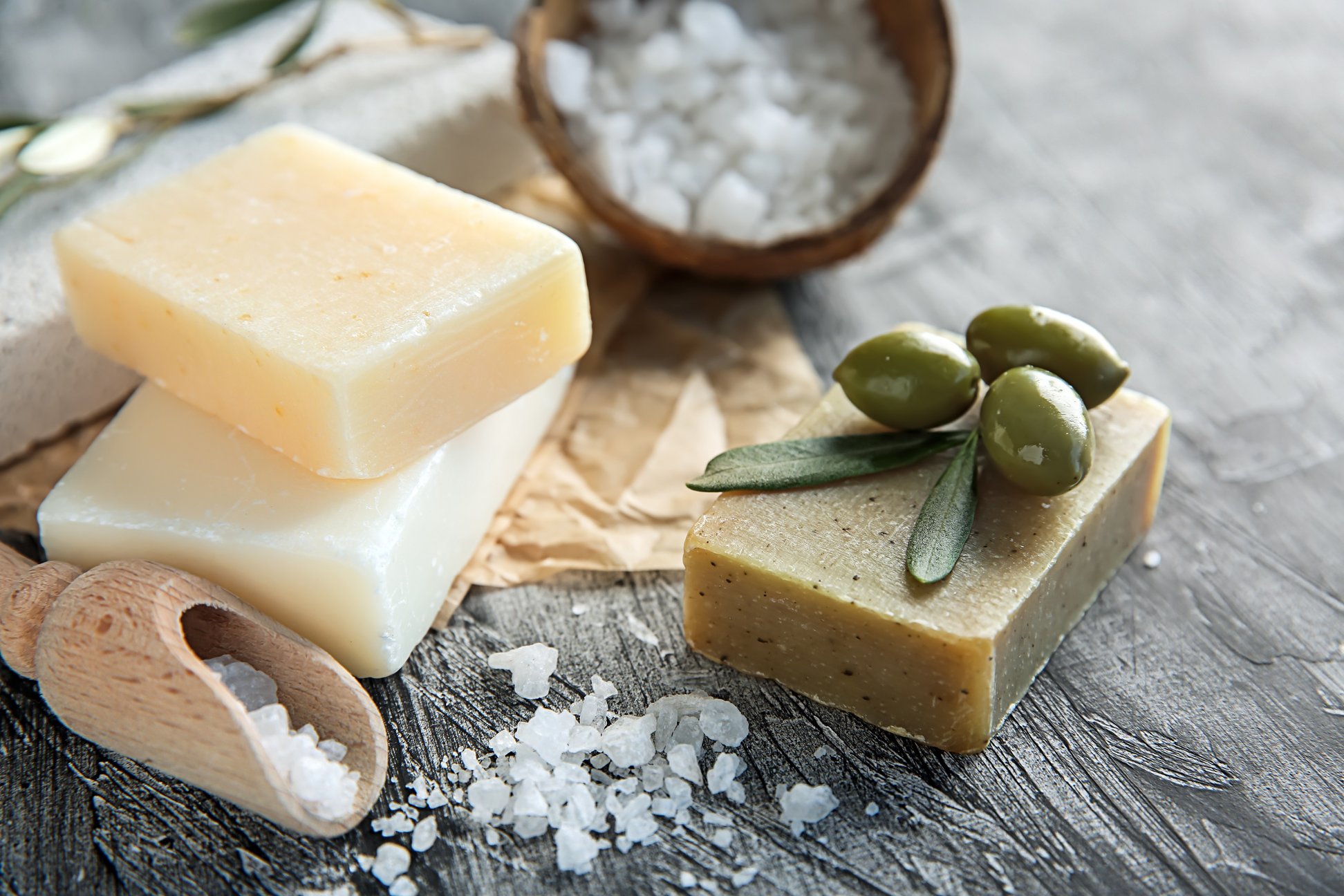
Equipment for soap making
- Digital scale
- hand blender
- Kitchen thermometer
- soap molds
- funnel pitchers
Ingredients for olive oil soap
- Water
- lye
- olive oil
- sodium lactate
- Mica powder, for the color
- Essential oils, for fragrance
how to make cold process olive oil soap
Measure the water with a digital scale and pour it into a heat-resistant glass or container.
Measure out the lye and add it to the water. Stir the lye until it dissolves. Note that the chemical reaction heats it up quickly. Set aside to cool.
Measure out the olive oil and place in a large mixing bowl.
Add one teaspoon of sodium lactate per pound of oil; for this recipe, I use 32 ounces of oil and 2 teaspoons of sodium lactate.
Once the lye water has cooled back to around 120-130°F, gradually add it to the mixing bowl along with the olive oil.
Place the hand blender on the bottom of the center of the bowl. Pulse for a few seconds, then give a quick stir with the mixer off. Repeat the process until you have a THIN TRACK.
If you are using essential oils to scent the soap bars, add them now.
If using multiple colors, pour the soap into separate mixing containers with funnels and add the color. Stir until desired color is achieved.
Prepare the shapes with parchment paper. When using silicone molds, parchment paper is not required.
To create the swirl effect, start at opposite corners of the mold and slowly pour the soap into the mold until it's about 1/4 of the way. Then pour in the next few colors at the same corners until the soap has traveled 1/4 of the way again. Repeat the process until the mold is filled.
Allow the soap to set and sit in the molds for at least 48 hours or up to 3 days.
Take the soap out of the molds and let it harden for 3 months before using it.
perfumed soap bars
Bars of soap can be scented with essential oils or fragrances. I use essential oils to scent soap bars. These are natural aromatic substances that can be beneficial for both skin and hair.
Some of my favorite essential oils to use in soap are in the floral and citrus category. These include lavender, geranium, and Roman chamomile, among others—all very soothing essential oils that are good for sensitive skin.
Citrus oils like orange, lemon, and lime give off a fresh, clean scent that's fun and energizing. Other popular oils include forest oils like Siberian fir, sandalwood, or cedarwood.
You can use a single oil or multiple oils to create your own custom blend. The possibilities are endless, and this is definitely the best part of making your own soap.
Soap making recipe
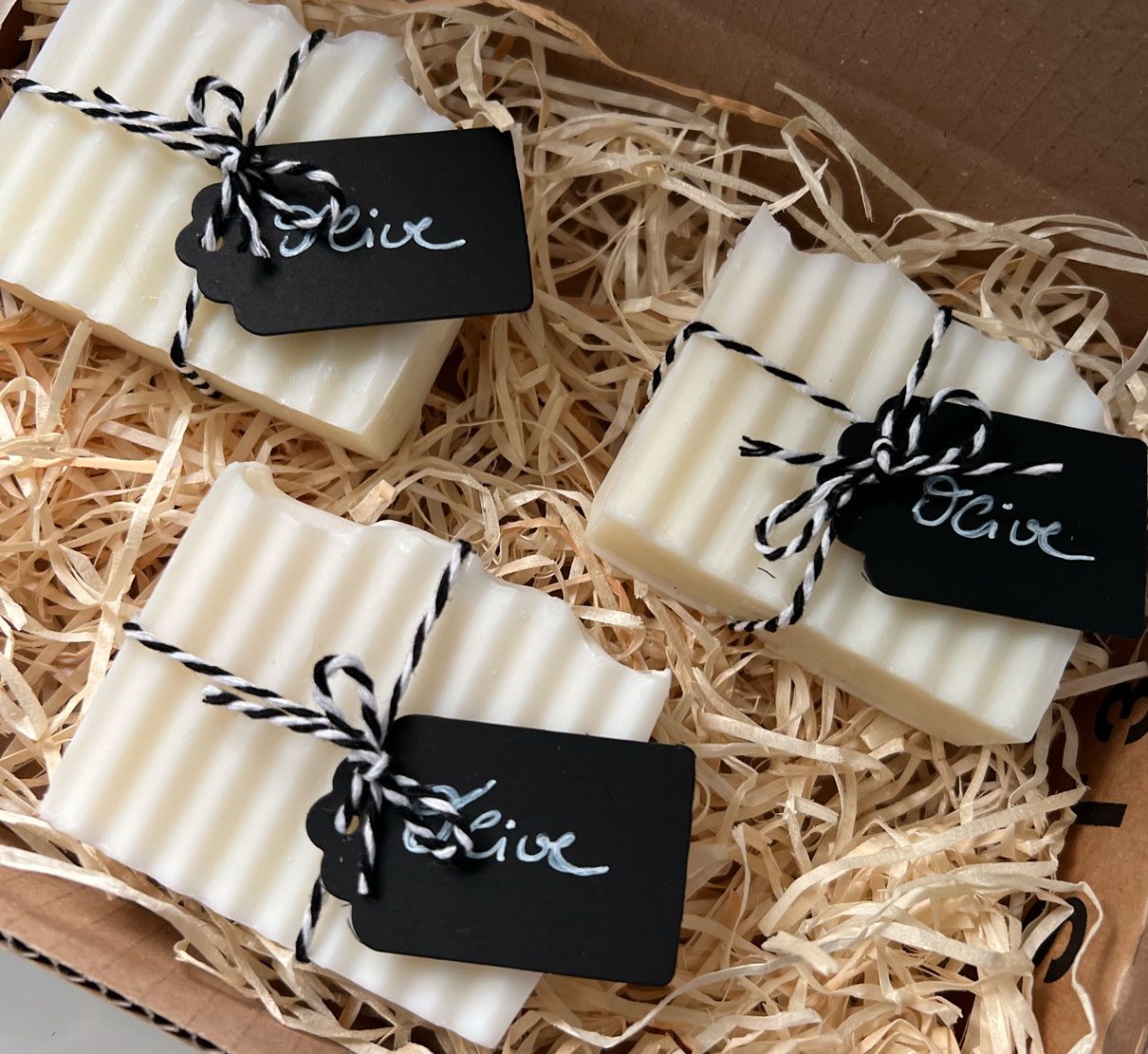
When you start making soap, you will realize that there is a specific formula that you need to use in order for your soap bars to turn out good. For this olive oil soap, I use 15% less water than usual to make it ready faster because olive oil takes a while to get ready.
Because of this, the water and lye become hotter than normal. Therefore, let the water cool down to 130 degrees before mixing it with the olive oil.
In most cases you should have 5% super fat, meaning 5% of the oil is not converted to soap.
soap calculator
The measurements you use to make soap must be accurate; i use one soap calculatorto get my exact measurements. If you decide to adjust this recipe, you will need to use the calculator to work out the correct amounts.
Easy Olive Oil Soap Recipe
Beautiful decorative soap bars with olive oil swirl. These soap bars are fun, great looking and make great gifts!
Materials
- 7,91 ounces of water
- 4,16 ounces of lye
- 32 ounces extra virgin olive oil
- 2 teaspoons sodium lactate
- 15-20 drops of lavender essential oil, optional
- Mica powder for coloring, optional
Tools
- hand blender
- Mixing bowl
- Safety goggles
- rubber gloves
instructions
- Measure the water with a digital scale and pour it into a heat-resistant glass or container.
- Measure out the lye and add it to the water. Stir the lye until it dissolves. Note that the chemical reaction causes the lye to heat up quickly. Put aside.
- In a large mixing bowl, combine olive oil and sodium lactate.
- When the lye water has cooled to 120-130°F, add a little at a time to the oil in the bowl.
- Place the hand blender on the bottom of the center of the bowl. Pulse for a few seconds, then briefly swirl through with mixer off. Repeat the process until there is a thin line.
- If using essential oils, add them now and stir well.
- If you want to mix multiple colors, divide the soap into the mixing containers. Then add dye 1 teaspoon at a time until you get the color you want.
- Starting at opposite corners of the mold, slowly pour the soap into the mold until it spreads about 1/4 of the way. Then, on the same corner, pour in the next color mix until the soap is pushed back a quarter of the way. Repeat this process until the mold is filled.
- Allow the soap to set and sit in the molds for at least 48 hours or up to 3 days.
- Take the soap out of the molds and let it harden for 3 months before using it.
Source: ouroilyhouse.com

